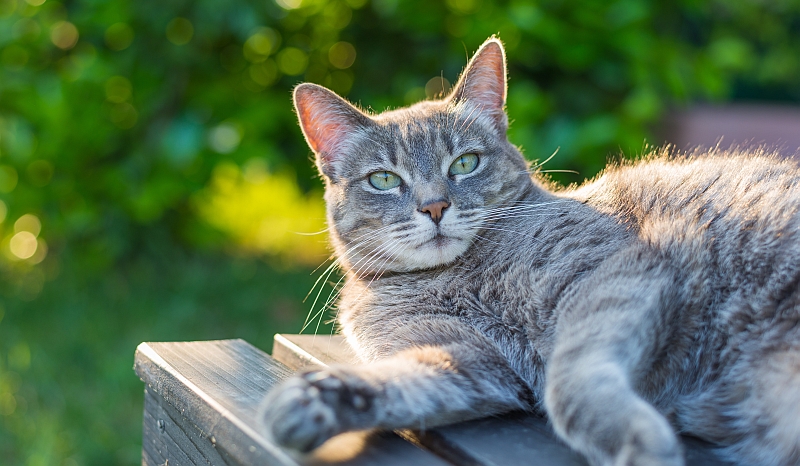Just 50-60 years ago, most pet parents lived under the assumption that animals are for the outdoors and that the indoors should be for humans alone. Unless there was a rodent problem, the majority of pets would contentedly live outside, sleeping in a shed, barn, on the porch or in a small pet house. Now, the common advice from most veterinarians is that it is safer for the pet to live primarily indoors with their owners. Some people even allow their pets to sleep on or in the bed with them at night!
The question about whether living 100% indoors, or mostly outdoors is better, does arise often in the world of pet care. Some people claim their friendly “strays” or the farm cats have fewer health problems than indoor pets. These animals survive by eating scraps off the porch, wandering free, hunting for their food and staying agile with this kind of lifestyle. Animals that were designed for hunting in the wild and trekking great distances, to be coddled indoors and fed processed food, may have lives that are neither as full nor as beneficial as one where the cat is allowed to roam freely. Here is a quick comparison between the two lifestyles, and ultimately what is best for your cat.
Outdoor Cats
Pros: They have limitless freedom. These cats can travel as far as they want, and have the whole world as an obstacle course to climb around, jumping, staying fit, active and healthy. By hunting for food the cats get to practice and hone the skills they were born with, and would be less frustrated and limited creatures.
Cons: Living outdoors presents many dangers, from predators, to busy roads, other stray cats, to people, natural disasters, etc. If they were to be wounded or hurt, the cat would have to suffer and potentially die without comfort, aid or intervention. Cats that live outside are also much more likely to get infected with one of the many life-threatening diseases that are often passed between cats. Statistically speaking, outdoor cats have shorter lifespans than indoor cats, and if not neutered or spayed they will almost certainly get pregnant, increasing the number of feral cats living on the street and the likelihood that they will get cancer or have other health complications.
Indoor Cats
Pros: They are provided for by a loving pet owner. They have security, safety, and are given medical, emotional, physical and mental care. These cats receive love and affection and play time in a comfortable environment. They avoid the myriad of dangers that come from being exposed to the elements, predators and diseases which plague cats who live outside. If they are ever wounded or ill they can have access to professional medical care right away, without having to suffer slowly. Indoor cats have their needs met and get to enjoy leisure and the freedom to enjoy a companionable life without having to stress about simply needing to survive.
Cons: They do not get to wander freely or leave the house at their own will. Some indoor cats can get fat and lazy if they are overfed, not exercised enough. If indoor cats are not given toys, puzzles and activities to work through, they can also have behavioral problems from frustration.
In summary, we believe that indoor-only living is the safest and best way to care for your pet feline. We know that there will be a wide range of varying opinions on this subject, but believe that protecting your cat by offering a healthy, balanced and active life indoors is the most responsible approach. All of the potentially negative aspects of living inside with a feline can be overcome by feeding them a balanced diet, giving them ample creative toys and plenty of playtime in order for them to be well-adjusted.

